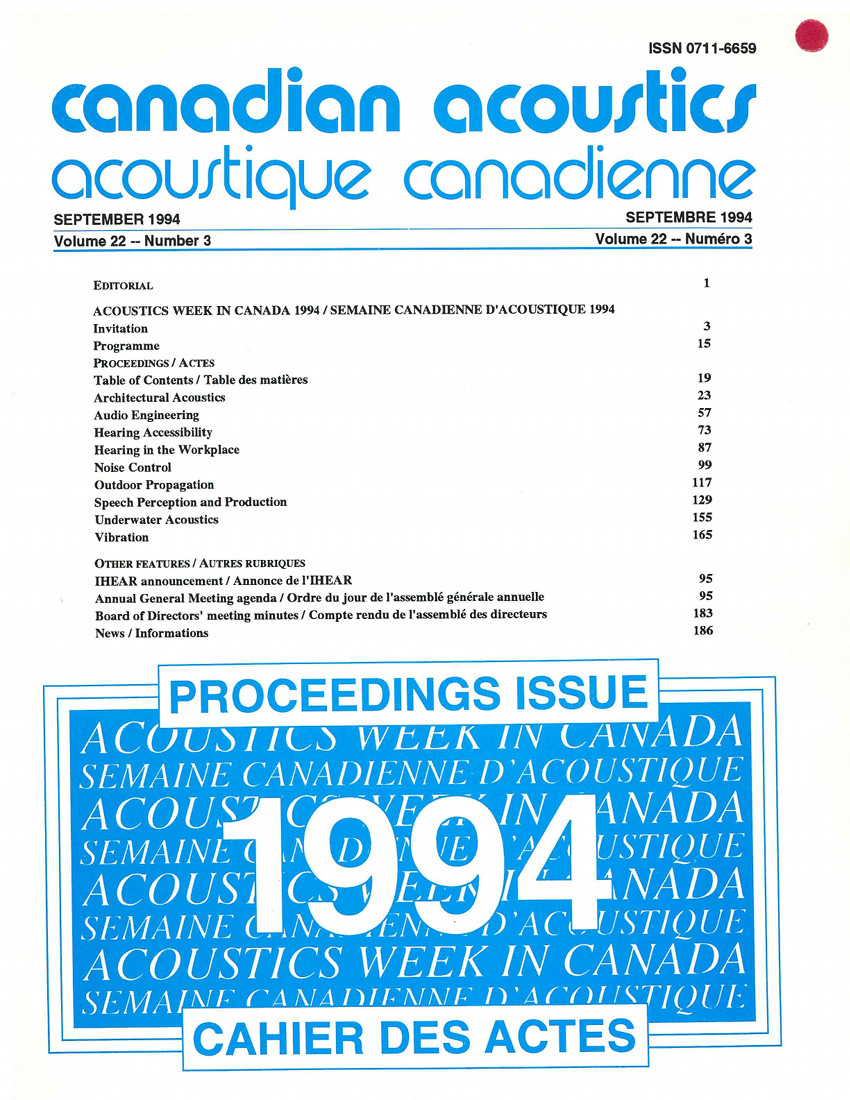Evaluation of appropriate sample size for measurement of vibration levels induced by rail transit vehicles
Keywords:
rail traffic, rapid transit systems, statistical analysis, vibrations, building vibration, sample size, rail transit vehicles, ground vibrations, subway train, streetcarAbstract
Building vibration levels induced by rail transit vehicles under usual operational conditions can vary from one vehicle to another. In order to obtain meaningful vibration levels, measurements of building and (or) ground vibrations should be performed for an appropriate number of vehicle pass-bys. In a recent rail transit sysem vibration study by the authors, the number of vehicle pass-bys for a particular vehicle population was chosen so that the mean vibration level of the sampled vehicles is reasonably close to the true mean of vibration levels, induced by all vehicles in the population. This paper presents statistical analysis procedures, based on Kreyszig (1979) and Ang & Tang (1975), that can be used to determine an appropriate sample size to achieve a certain confidence range of the true mean vibration level, e.g.±3 dB of the sample mean, for a certain confidence level, e.g. 95%. The results obtained using these statistical procedures are reported for subway train and streetcar populations of the rail transit system studied by the authors. In addition, verification of the appropriateness of the calculated sample sizes is presentedAdditional Files
Published
How to Cite
Issue
Section
License
Author Licensing Addendum
This Licensing Addendum ("Addendum") is entered into between the undersigned Author(s) and Canadian Acoustics journal published by the Canadian Acoustical Association (hereinafter referred to as the "Publisher"). The Author(s) and the Publisher agree as follows:
-
Retained Rights: The Author(s) retain(s) the following rights:
- The right to reproduce, distribute, and publicly display the Work on the Author's personal website or the website of the Author's institution.
- The right to use the Work in the Author's teaching activities and presentations.
- The right to include the Work in a compilation for the Author's personal use, not for sale.
-
Grant of License: The Author(s) grant(s) to the Publisher a worldwide exclusive license to publish, reproduce, distribute, and display the Work in Canadian Acoustics and any other formats and media deemed appropriate by the Publisher.
-
Attribution: The Publisher agrees to include proper attribution to the Author(s) in all publications and reproductions of the Work.
-
No Conflict: This Addendum is intended to be in harmony with, and not in conflict with, the terms and conditions of the original agreement entered into between the Author(s) and the Publisher.
-
Copyright Clause: Copyright on articles is held by the Author(s). The corresponding Author has the right to grant on behalf of all Authors and does grant on behalf of all Authors, a worldwide exclusive license to the Publisher and its licensees in perpetuity, in all forms, formats, and media (whether known now or created in the future), including but not limited to the rights to publish, reproduce, distribute, display, store, translate, create adaptations, reprints, include within collections, and create summaries, extracts, and/or abstracts of the Contribution.


